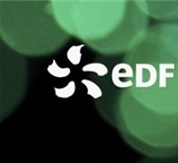Heavy Reflector type EPR benchmarking
Résumé
As part of the EPR studies on the heavy reflector conducted by EDF, a neutronic and thermalhydraulic calculation benchmark was initiated between EDF (France), MHI (Japan) in the MAI (Material Ageing Institute) and CVR (Czech Rep.) and Framatome (formerly AREVA NP). A previous similar benchmark between EDF and EPRI working with Westinghouse and Framatome had compared calculation results for a simplified PWR type internal structure 1. The analysis of the neutronic results in terms of calculated flux, dose and deposited energy showed that the methodologies were consistent despite some discrepancies in the neutronics results. Among the differences, the radial profiles of gamma heating were different with regard to the thickness of the component. This could have a significant effect for thicker components such as heavy reflectors. For the thermal hydraulics part, results showed a very good agreement in the case of an identical gamma heated field.
Given the large thickness of the EPR or WWER 1000 lower core internal component, the MAI project on Internals has examined more specifically the deposited energy profile and has set up a new bench-mark based on a simplified heavy reflector geometry. Indeed, both Russian WWER 1000 and French EPR type of reactors have a heavy reflector and thus a substantial thickness of stainless steel. First of all, the objective for EDF, MHI, CVR and Framatome is to assess the neutronics loadings inside the vessel internals up to the vessel core. Then, using the same boundary conditions, EDF and MHI ran conjugate heat transfer calculations with their own numerical tools to determine the temperature of the internal structure. Two calculations have been performed, first with a common gamma heating rate and then with an in-house neutronic calculation. The objective of the first one was to evaluate the accuracy of the Computational Fluid Dynamics - Computational Heat Transfer (CFD-CHT). The second one has allowed an evaluation of the variation of the structure temperature induced by the gamma heating rate uncertainty. Thus, this work strengthens the complete participants’ calculation chain from particle transport model to temperature evaluation inside the vessel.
The simplified geometry proposed for this benchmark seeks to combine both EPR and VVER1000 at-tributes. It has a double symmetry enabling the modelling of 1/4th of the heavy reflector and core barrel with three L-shaped assemblies. To cool down the structure, a flow goes up from the bottom to the top through 85 cooling holes. Flow rates, gamma heating rates and boundary conditions on the inner face of the baffle and outer face of the barrel are imposed.
The model, common to all participants, has enabled the comparison of a set of calculated values includ-ing neutron and gamma flux mainly in the thermal area of the spectrum, dose (in dpa) due to neutrons, gamma heating rates and finally, temperature of the structure and of the cooling fluid.
This paper presents comparison and first analysis of the participant’s results.
Origine : Fichiers produits par l'(les) auteur(s)

